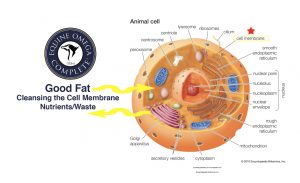
How Essential Fatty Acid (Omega) Supplementation and the use of Healthy Fat in Horse’s diet Contributes to Cell Development and Function
Every cell in the horse’s body is surrounded by fat. Omega-6 and omega-3 fatty acids compete for incorporation into the cell membrane.
As part of the cell membrane, omega-3 fatty acids increase fluidity, flexibility, permeability and the activity of enzymes that bind to the membrane. Omega-3 fatty acids have a key function in the formation, growth and regeneration of cells and in the transmission of cell signals throughout life.
Cleansing the Cell Membrane
There are trillions of cells in a horse’s body and the majority of that cell membrane is made up of fat, if it is good fat like Equine Omega Complete, nutrients get in and waste gets out and the cells function properly. Nutrition is the best way to insure that the cell membranes will stay healthy.
O3 Animal Health’s products contain the good fats, which are a healthy alternative energy source. Healthy fat serves as an alternative energy source to calories normally provided by nonstructural carbohydrate. Horses with nutritional diseases, such as Equine Metabolic Syndrome or insulin resistance may still need a fuel source beyond what their hay provides. Offering fat as an alternative calorie source reduces the digestive and metabolic risks that are often correlated with diets high in starch and sugar.
Some of the higher fat grains have significant processed less desirable fat. We suggest feeding a high quality lower fat grain with our products. Aim for a grain of about 6% crude fat or less and let our healthy fat be the good fat source for the horse.
In addition, adding healthy fat to the diet allows for smaller meal size without reducing the amount of calories. This lowers the risk of digestive disorders by allowing the concentrate portion of the meal to be fully digested before it passes into the hind gut. Improperly or partially digested concentrates can ferment in the hind gut, disturbing the delicately balanced population of bacteria. Feeding fat is also thought to help reduce the incidence and severity of gastric ulcers. Supplementation of the omega-6 fatty acids, linoleic acid and arachidonic acid promote the production of mucus, which acts to protect the gastric lining from corrosive acid.
Our customer reviews tell the story. See them on our site at https://o3animalhealth.com/reviews/
If you are a trainer or breeder and are interested in product testing our products, please contact us kathleen@o3animalhealth.com

Always check with Past the Wire for the latest horse racing news and more…..



